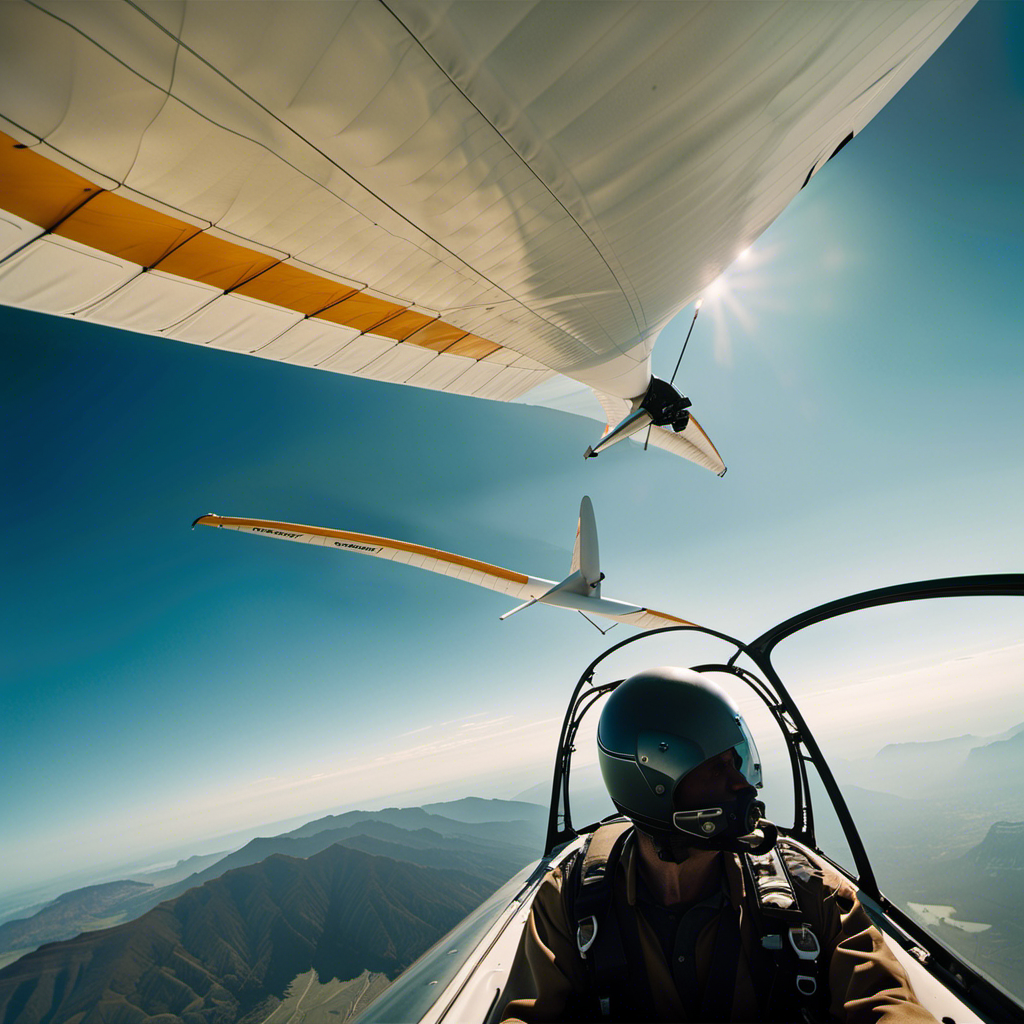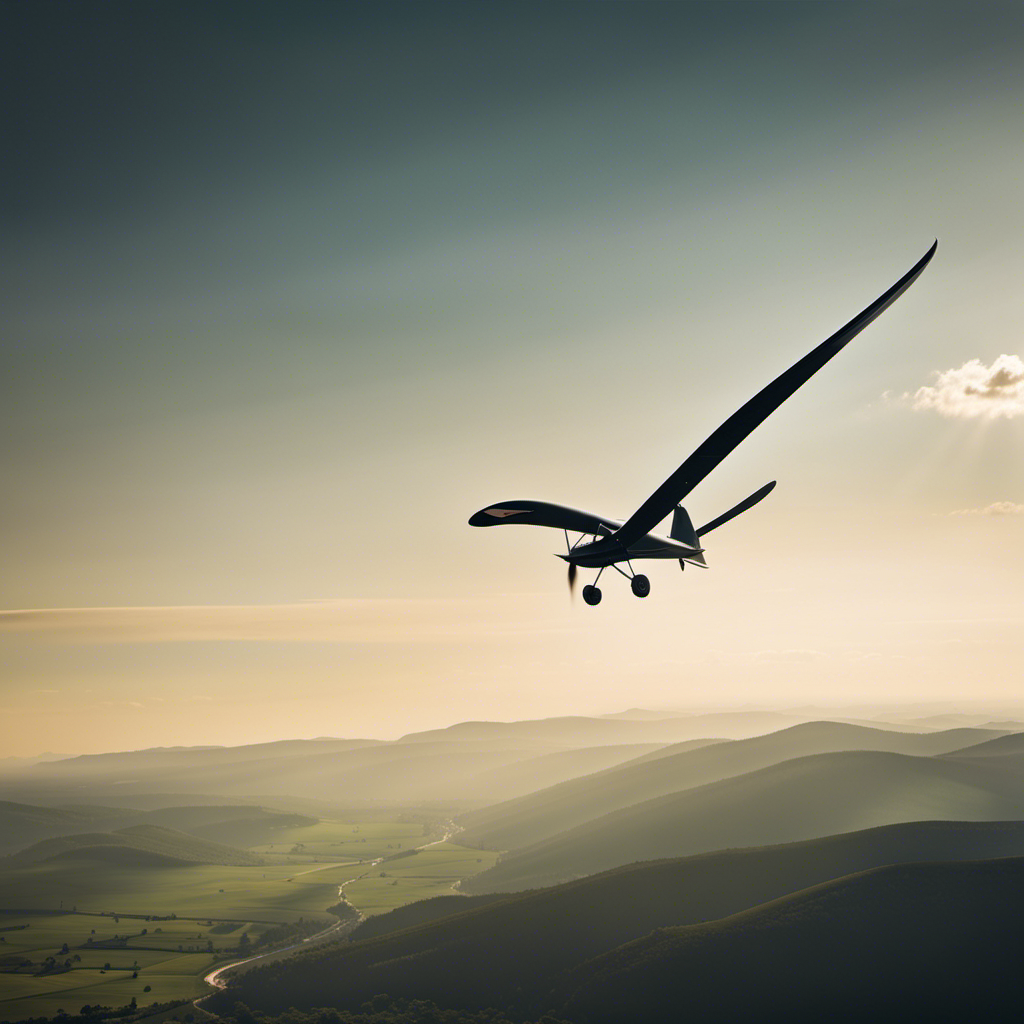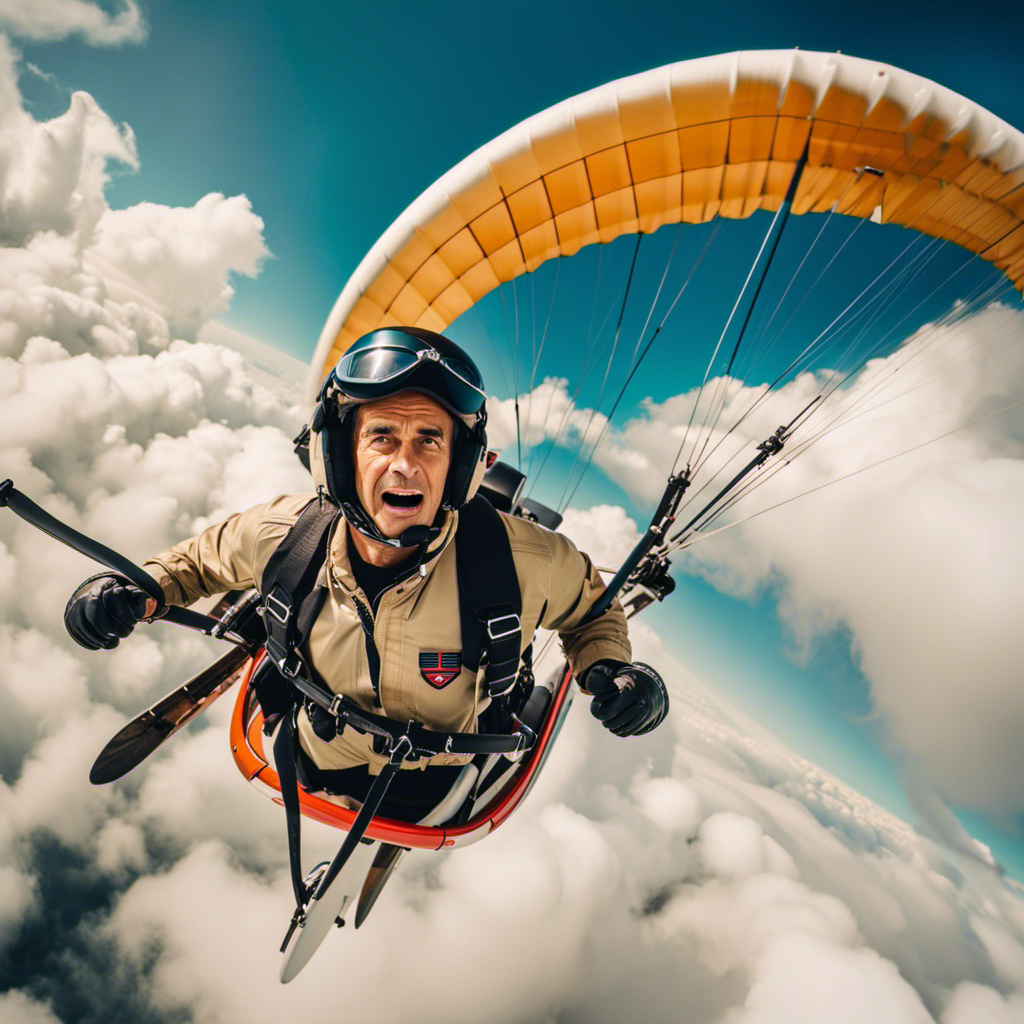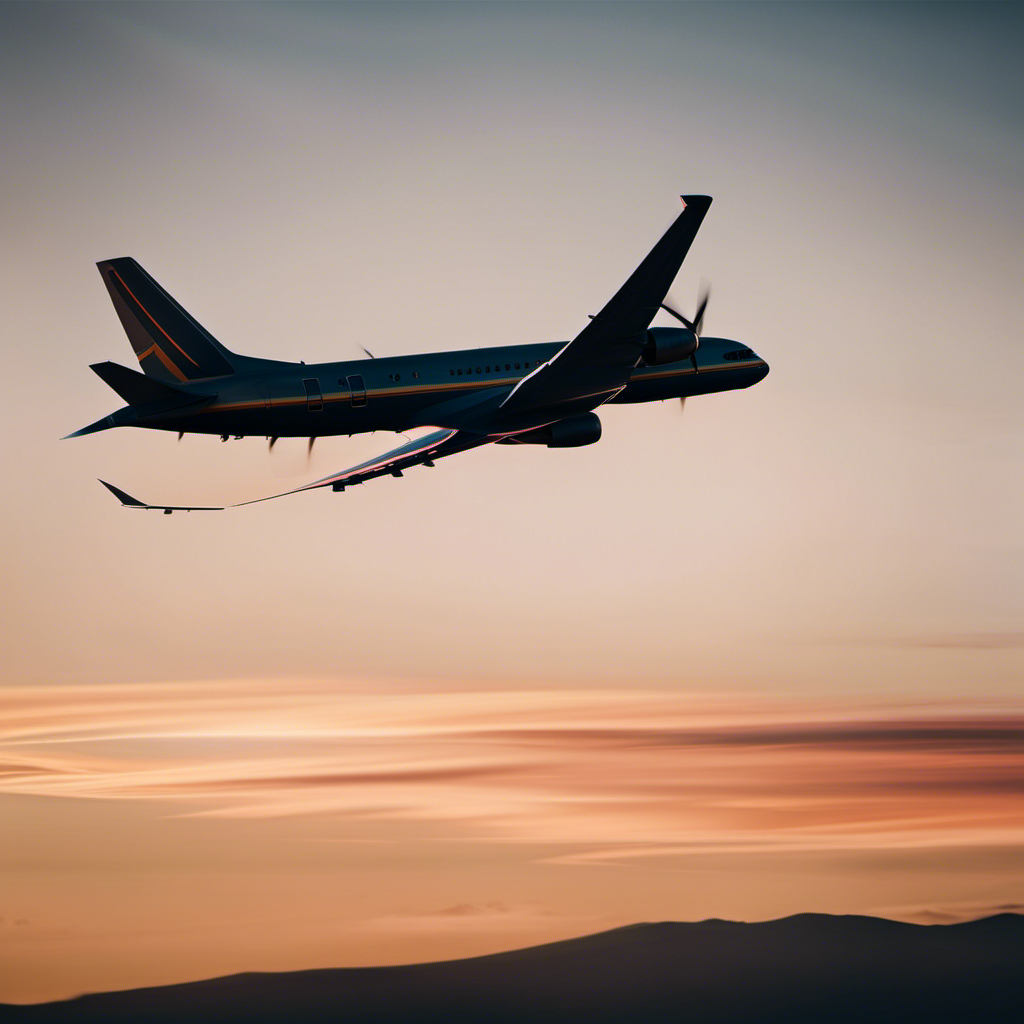As an enthusiastic glider pilot, I have felt the exciting rush of gliding through the sky, guided by the wind. If you are ready to embark on this thrilling adventure, ‘Master the Air: Essential Glider Instruction Tips’ is the ultimate guide for you.
Delve into the principles of aerodynamics, learn the nuts and bolts of glider operation, and become a master of takeoff, landing, and navigating in flight.
With expert tips on weather analysis, emergency procedures, and performance optimization, this article will equip you with the knowledge to conquer the skies.
So, buckle up and let’s soar!
Key Takeaways
- Optimizing weight and balance is crucial for glider performance, including body position, equipment placement, and ballast distribution.
- Participating in glider races and competitions enhances skills, tests knowledge and decision-making, and improves overall performance as a glider pilot.
- Training and practice sessions are essential for continuous improvement, honing flying techniques, and staying up-to-date with field developments.
- Feedback from experienced instructors is invaluable for identifying weaknesses, receiving insights, and enhancing overall performance as a glider pilot.
Understanding the Principles of Aerodynamics
To understand the principles of aerodynamics, you’ll need to grasp how air moves around and over the wings of a glider. Aerodynamics is the study of how air interacts with objects in motion.
In the case of a glider, the shape and design of the wings play a crucial role in generating lift and reducing drag. The curved shape of the wings, known as an airfoil, helps to create a pressure difference between the upper and lower surfaces of the wing. This pressure difference results in lift, which allows the glider to stay airborne. Additionally, the wings’ angle of attack, which is the angle between the wing’s chord line and the direction of the oncoming air, also affects lift.
By understanding these principles, you can better appreciate how a glider operates and maneuvers through the air.
Now let’s move on to learning the basics of glider operation, which will give you a deeper understanding of how to control a glider effectively.
Learning the Basics of Glider Operation
Learning the basics of how a glider operates can be a challenging but rewarding experience. As someone who has spent countless hours soaring through the sky, I understand the importance of mastering the fundamental principles.
Here are four key elements to grasp when it comes to glider operation:
-
Lift: Understanding how lift is generated by the glider’s wings is crucial. It is created by the difference in air pressure between the upper and lower surfaces of the wing.
-
Weight: Knowing the weight of the glider and how it affects its performance is essential. Weight influences the glider’s ability to climb, descend, and maintain stability.
-
Drag: Recognizing the various types of drag, such as parasite drag and induced drag, helps optimize the glider’s efficiency and speed.
-
Controls: Becoming familiar with the glider’s control surfaces, including the ailerons, elevator, and rudder, allows for precise maneuverability in the air.
Mastering Takeoff and Landing Techniques
Understanding the importance of smooth takeoff and landing techniques will help you confidently navigate the skies in your glider.
When it comes to takeoff, it is crucial to maintain a steady speed and angle of climb. Applying full back pressure on the stick while smoothly increasing airspeed will ensure a safe ascent.
During landing, it is essential to maintain control of the glider and minimize any potential risk. Approaching the landing zone at the correct angle and speed is crucial. Gently flare the glider just above the ground to reduce descent rate and ensure a smooth touchdown.
Mastering these techniques will not only enhance your safety but also improve your overall flying experience.
Now, let’s move on to the next section about navigating and controlling the glider in flight.
Navigating and Controlling the Glider in Flight
As I navigate and control the glider in flight, I always remember to maintain a steady speed and altitude. This is crucial for ensuring a smooth and enjoyable flying experience. By keeping a consistent speed, I can avoid sudden and jarring movements that could disrupt the glider’s stability.
Additionally, maintaining a steady altitude allows me to stay in control of the glider’s position relative to the ground and other objects. It’s important to make small adjustments as needed, but to do so in a smooth and controlled manner. By practicing these skills, I can confidently maneuver the glider through the air with ease.
Now, let’s move on to the next topic of reading and analyzing weather patterns, which is essential for safe glider flying.
Reading and Analyzing Weather Patterns
When reading and analyzing weather patterns, it’s important to consider factors such as wind speed and direction, cloud cover, and temperature. These elements provide crucial information that helps me make informed decisions while piloting a glider.
By understanding the wind speed and direction, I can determine the best course of action and adjust my flight accordingly.
Cloud cover gives me insight into the stability of the atmosphere, as well as the potential for thermals or turbulence.
Additionally, temperature variations can indicate the presence of thermal activity, which is essential for sustaining flight.
Developing Advanced Piloting Skills
To develop advanced piloting skills, you’ll need to practice regularly and seek guidance from experienced pilots. This is crucial because mastering the art of glider piloting requires a deep understanding of the aircraft’s capabilities and limitations.
Regular practice allows you to become familiar with the nuances of glider handling, improving your ability to read and respond to the ever-changing conditions of flight. Seeking guidance from experienced pilots provides invaluable insights and tips based on their own experiences. They can help you refine your techniques and avoid common mistakes.
Once you have a solid foundation in basic piloting skills, you can then move on to practicing emergency procedures and safety measures. These exercises are essential for cultivating the necessary reflexes and decision-making abilities to ensure your safety in challenging situations.
Practicing Emergency Procedures and Safety Measures
Practicing emergency procedures and safety measures helps me develop the necessary reflexes and decision-making abilities to ensure my safety in challenging situations.
As a glider pilot, I understand the importance of being prepared for any unforeseen circumstances that may arise during a flight. Regularly practicing emergency procedures, such as simulated forced landings and stall recovery, allows me to familiarize myself with these critical maneuvers. By repeating these exercises, I build muscle memory and enhance my ability to react quickly and effectively in an emergency.
Additionally, implementing safety measures, such as conducting pre-flight inspections and maintaining proper communication with air traffic control, further enhances my ability to handle potential risks.
Now, let’s explore how enhancing my gliding performance with weight and balance optimization can further improve my skills and overall flight experience.
Enhancing Your Gliding Performance with Weight and Balance Optimization
By optimizing your weight and balance in gliding, you can greatly improve your overall performance and enhance your flight experience. Maintaining the proper weight and balance distribution is crucial for achieving optimal gliding performance.
It allows you to control the glider more effectively and efficiently, resulting in smoother maneuvers and better control over the aircraft. To achieve the ideal weight and balance, you need to consider factors such as the position of your body, the placement of equipment, and the distribution of ballast.
It is important to regularly assess and adjust the weight and balance during flight to ensure optimal performance. By mastering weight and balance optimization, you will be well-prepared to participate in glider races and competitions where precision and performance are key.
Participating in Glider Races and Competitions
After optimizing the weight and balance of your glider, you will find yourself ready to take on new challenges and push your skills to the limit.
One exciting way to do this is by participating in glider races and competitions. These events provide a platform for glider pilots to showcase their abilities and compete against other skilled aviators.
Engaging in glider races not only adds an element of thrill and excitement to your flying experience but also allows you to test your knowledge and decision-making skills in a competitive environment.
By analyzing race strategies, honing your navigation skills, and perfecting your techniques, you can gain valuable insights and improve your overall performance as a glider pilot.
Transitioning from competition to the next section, continuously improving your skills through training and practice sessions is essential to excel in gliding.
Continuously Improving Your Skills through Training and Practice Sessions
To continuously improve your skills as a glider pilot, it’s important to regularly engage in training and practice sessions. These sessions allow you to hone your flying techniques, refine your decision-making skills, and stay up-to-date with the latest developments in the field. By dedicating time to training and practice, you can enhance your ability to handle different weather conditions, navigate challenging terrains, and execute precise maneuvers. Additionally, these sessions provide an opportunity to work on specific areas of weakness and receive feedback from experienced instructors. To illustrate the importance of training and practice, I have created a table below that highlights some key benefits:
| Benefits of Training and Practice Sessions |
|---|
| Improved flying techniques |
| Enhanced decision-making skills |
| Up-to-date knowledge |
| Increased proficiency in handling weather |
| Better navigation skills |
| Fine-tuned maneuver execution |
Frequently Asked Questions
What are the best exercises to improve balance and coordination for gliding?
To improve balance and coordination for gliding, I recommend practicing exercises like yoga, Pilates, and balance training. These activities help strengthen core muscles, improve proprioception, and develop a strong sense of body awareness essential for successful gliding.
How can I determine the weight and balance of my glider?
To determine the weight and balance of my glider, I start by conducting a thorough assessment. I carefully measure and distribute the weight, ensuring proper balance. This process is like an intricate dance, where every move matters for a smooth flight.
What are some common mistakes to avoid during takeoff and landing?
During takeoff, common mistakes to avoid include not properly aligning the glider with the runway, rushing the takeoff, or not maintaining a proper airspeed. During landing, avoid flaring too high or too late, and ensure a smooth touchdown with proper flare and control inputs.
Are there any specific weather conditions that are not suitable for gliding?
Yes, there are specific weather conditions that are not suitable for gliding. High winds, thunderstorms, fog, and poor visibility can all pose significant risks and should be avoided for safe gliding operations.
Can you provide tips on how to recover from a stall or spin during flight?
Wondering how to recover from a stall or spin during flight? First, recognize the signs of a stall or spin. Then, take immediate action by applying opposite rudder and releasing backpressure on the controls. Remember, practice makes perfect!
Conclusion
Well, there you have it, folks! After reading this comprehensive guide on mastering the art of gliding, I can confidently say that there’s nothing quite like the thrill of soaring through the skies.
Who needs engines when you have the power of aerodynamics at your fingertips? So go ahead, take to the skies, and experience the sheer joy of gliding.
Just remember, it’s not as easy as it looks, but with the right knowledge and practice, you’ll be conquering the air in no time.
Good luck and happy gliding!
With a heart that soars as high as the skies, Aria, affectionately known as “Skylark,” is the driving force behind Soaring Skyways. Her journey into the gliding world began as a young dreamer gazing up at the soaring birds, yearning to experience the weightlessness and freedom they embodied. With years of experience both in the cockpit and behind the scenes, Aria’s commitment to the gliding community is unwavering.










